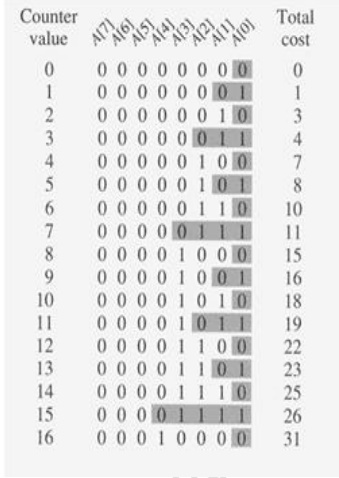Chapter: Programming and Data structures : Advanced Non-Linear Data Structures
Aggregate Analysis
AGGREGATE
ANALYSIS:
·
In fact, a sequence of n operations on an initially empty stack cost at most O(n).
·
Each object can be POP only once (including in
MULTIPOP) for each time it is PUSHed. #POPs is at most #PUSHs, which is at most
n.
·
Thus the average cost of an operation is O(n)/n = O(1).
·
Amortized cost in aggregate analysis is defined to
be average cost.
Example: Increasing a binary counter
Binary
counter of length k, A[0..k-1] of bit array.
INCREMENT(A)
1. i < --- 0
2. while i<k
and A[i]=1
3. do A[i] < --- 0 (flip, reset)
4.
i < ---
i+1
5. if i<k
6. then A[i] < --- 1 (flip, set)
Amortized (Aggregate) Analysis of INCREMENT (A)
The running time determined by #flips but not all bits flip each time INCREMENT is called.
A[0]
flips every time, total n times.
A[1]
flips every other time, Ă«n/2Ă» times.
A[2]
flips every forth time, Ă«n/4Ă» times.
….
for i=0,1,…,k-1, A[i] flips ën/2iû times.
Thus
total #flips is


•
Thus the worst case running time is O(n)
for a sequence of n INCREMENTs.
•
So the amortized cost per operation is O(1).
Related Topics